The homepage
The city of Wolfenbüttel
The Fachhochschule
Hall of residence
The cities visited
The required equipment
Day-to-day
The leisure activities
The transports
How to come?
Contacts
Choice of the Language:
The city of
Wolfenbüttel
Wolfenbüttel is a city of Lower Saxony, in Germany having 54.664 inhabitants. It is situated on the river Oker, in 10 km in the South of Brunswick ( Braunschweig).
It is not known when Wolfenbüttel was founded, but it was first mentioned in 1118 as Wulferisbutle. The first settlement was probably restricted to a tiny islet in the Oker river.
Wolfenbüttel became the residence of the dukes of Brunswick in 1432. Over the following three centuries it grew to be a centre of the arts, and personages such as Michael Praetorius, Johann Rosenmüller, Gottfried Leibniz, and Gotthold Ephraim Lessing lived there. The ducal court eventually returned to Braunschweig in 1753 and Wolfenbüttel subsequently lost in importance.
The Battle of Wolfenbüttel, part of the Thirty Years' War, was fought here in June 1641, when the Swedes under Carl Gustaf Wrangel and the Count of Königsmark defeated the Austrians under Archduke Leopold of Habsburg.
Several Resistance fighters were
beheaded
as for example Marguerite Bervoets there, resistant of Wallonia.
During the Second World war, Wolfenbüttel accommodated a concentration camp. Resistant Belgians were collected there (such as Raoul Rothé) and French, as well as (mainly) Gypsies. Some of them were beheaded in the axe, such Marguerite Bervoets and Théodore Lefebvre. Others were starved (a bowl of milk diluted with water with some fragments of bread a day) there.
The baroque Schloss (castle). In 1866
the
castle became the Anna-Vorwerk-School for girls. Today part of the
building is used as a high school; it also houses a great example of
Baroque state apartments, which are open to the public as a museum.
Evangéliaire d' Henri the Lion, the book the most expensive to the world, is in the library of duke Auguste to Wolfenbüttel. This book is a manuscript of 226 pages in parchment ( 1188 ). Acquired in 1983 in London during an auction at Sotheby for the moderate 16,6 million euro sum. In the death of duke Auguste in 1666, his library passed to be the 8th wonder of the world.
The library includes some 900.000 volumes today. With its 12.000 manuscripts (3000 of the Middle Ages), its ancient 5000 maps, its 350.000 volumes appeared between the XVth and the XVIIIth and its 5000 incunabula, the collection is a treasure of the European spiritual history going of the humanism to the Lights.
The father of the German philology
Schottelius lived in apartments of the city hall. It was the creator of
the semicolon.
The old town of Wolfenbüttel was the first city
revival built on plan and was formerly the North best strengthened city
of Germany.
Wolfenbüttel shelters several departments of the university of sciences applied of Brunswick/Wolfenbüttel and of the Academy of Lessing, an organization for the work study of Lessing. The liquor of Jägermeister is also a speciality of Wolfenbüttel and in is originating.
Places to be discovered to Wolfenbüttel: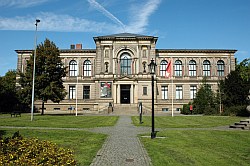
Library of duke Auguste ( 1887 ) with the book the most expensive to the world: the évangéliaire duke Henri le Lion ( 1188 ) and more than 900.000 volumes.
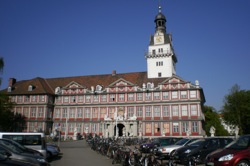
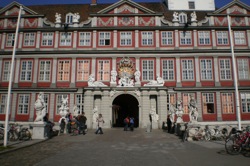
Castle of Welfes - in half-timbering - the former(ancient) residence of the dukes of Brunswick-Wolfenbüttel (from 1432 till 1757) - Museum with princely apartments.
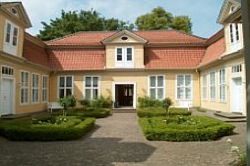
House of Lessing - Museum on its life and its work.
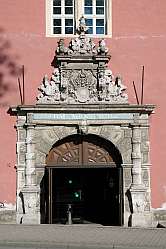
Arsenal ( 1618 ) fine building revival.
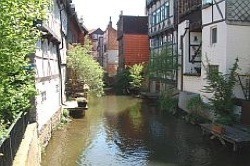
Small Venice, charming district at the edge of the water. Alleys lined with houses with timber framings of rather sober style.
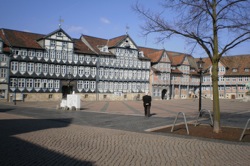
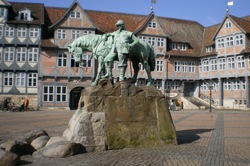
Market with city hall revival ( 1600 ), monument in honour of duke Auguste Young person ( 1579-1666 ), beautiful houses XVIIth.
Temple Our-Lady - Hauptkirche ( 1608 ) mixs of styles Gothic, revival and the baroque. Beautiful internal development. (in restoration)
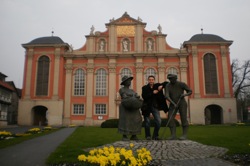
Church of the Trinity - the baroque ( 1719 ) built on the place of a front door of the city (door of the emperor).
(source of the text: wikipédia)


